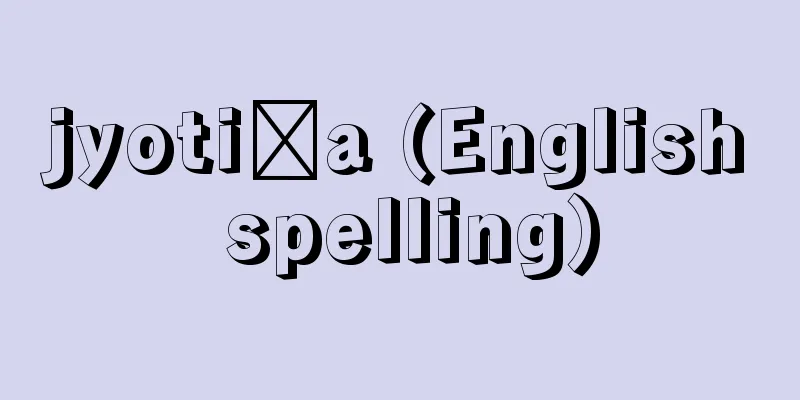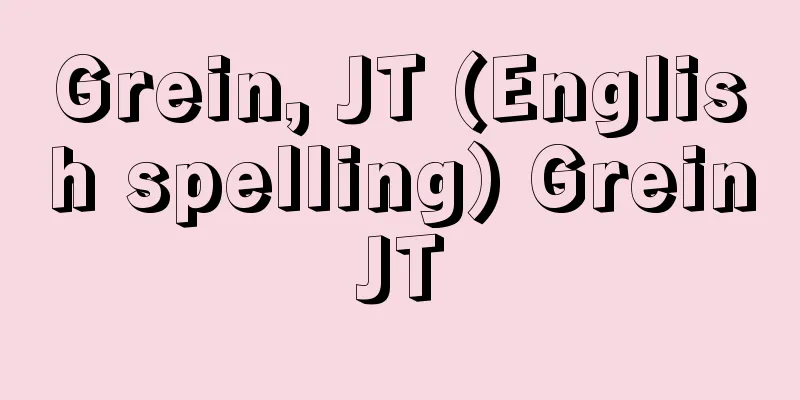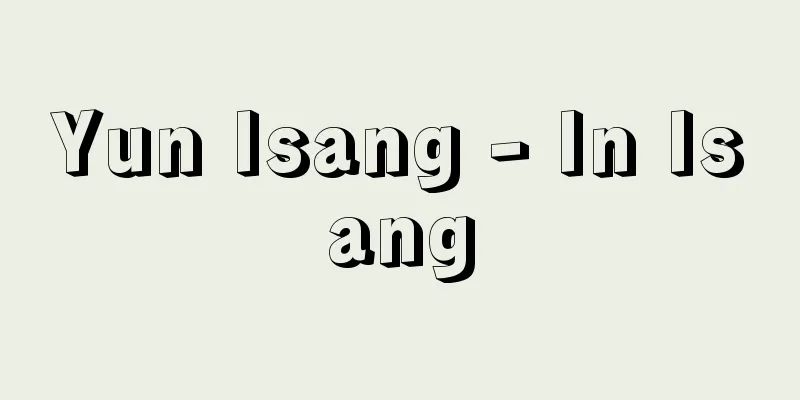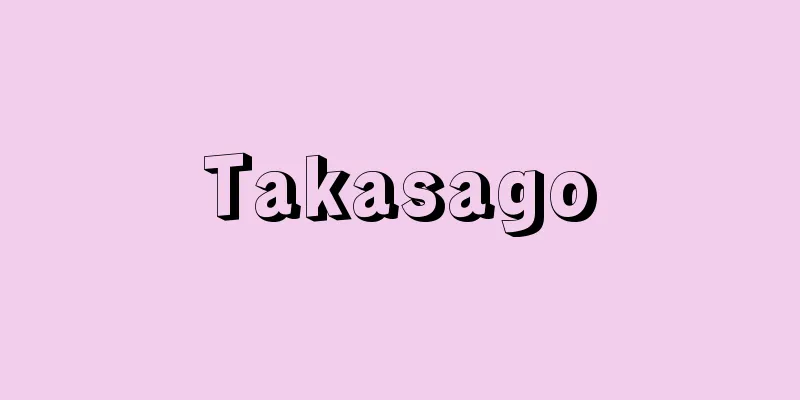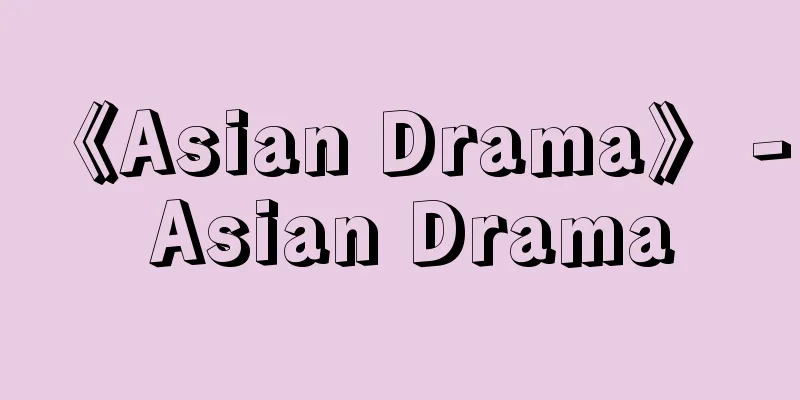Schoolchild evacuation
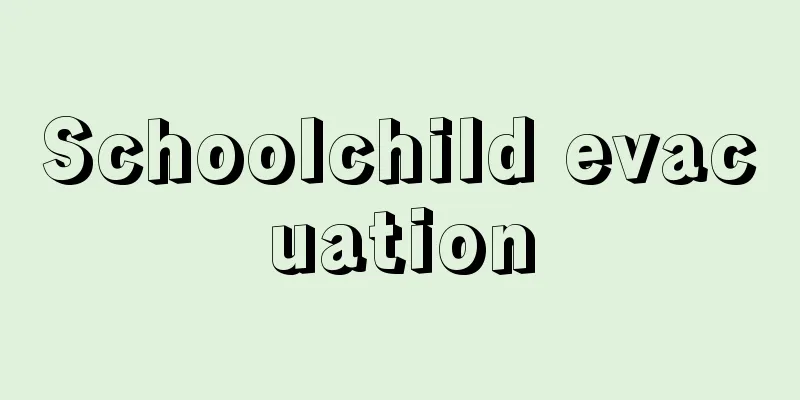
|
This was a measure taken at the end of World War II to semi-forcefully disperse elementary school children in large cities to rural areas as a group in preparation for the bombing of the Japanese mainland by the US military. As the war situation rapidly worsened, measures were taken from the end of 1943 (Showa 18) to facilitate the "evacuation to relatives," and in Tokyo, evacuation schools for children with no relatives were established from April 1944. When the US military landed on Saipan Island on June 15 of that year, the government was forced to "strongly promote" the "evacuation of school children." On the 30th of the same month, the government decided at a cabinet meeting to adopt the "Guidelines for promoting the evacuation of school children," which "strongly encouraged" the "evacuation to relatives," and decided to implement "mass evacuation" of children with no relatives. For the time being, "mass evacuation" was to be targeted at children in the elementary school of national schools between the third and sixth grades in the Tokyo wards, and was to be carried out "based on the application of their guardians." In July of the same year, 12 more cities were designated as evacuation cities: Yokohama, Kawasaki, Yokosuka, Osaka, Kobe, Amagasaki, Nagoya, Moji, Kokura, Tobata, Wakamatsu, and Yahata. As a result, with the exception of the five cities in Fukuoka Prefecture, approximately 350,000 children were evacuated en masse to approximately 7,000 hotels, temples, and other locations between August and September. On March 9, 1945 (Showa 20), just before the Great Tokyo Air Raid, the government decided at a cabinet meeting to adopt the "Outline for Strengthening the Evacuation of School Children," which, in order to "thoroughly strengthen the evacuation of school children," evacuated all children in the third year of primary school and above, and strongly encouraged first and second year children to evacuate to relatives, and included them in group evacuation. In April of the same year, four more cities were added to the list of evacuation cities: Kyoto, Maizuru, Hiroshima, and Kure. As a result, the number of children evacuated in groups increased to approximately 450,000. During this time, children from Okinawa and other war zone islands were also evacuated, and about 13,000 people were evacuated. However, on August 22, 1944, the evacuation ship "Tsushima-Maru," carrying children, teachers, and guardians from Okinawa, was sunk by a US submarine, and of the approximately 1,800 people on board, 1,476 people, including 779 children, were killed. Regarding the education of the children who were evacuated en masse, the Director-General of the National Education Bureau of the Ministry of Education issued a notice entitled "Matters Concerning the Education of School Children Evacuated En Masse" (1944), but in reality, they were so busy trying to secure food that they had no time to "cultivate the belief in victory" or "achieve the fruits of education in a harmonious home environment with teachers at the center." It was not until November 1945, after the end of the war, that the return from the evacuation was completed. [Yoshikazu Mihara] "Series: War Testimony 4: Mass Evacuation of School Children" by Hamadate Kikuo (1971, Taihei Publishing)" ▽ "Soka Gakkai Youth Division Anti-War Publishing Committee ed.: Records of Schoolchild Evacuation" (1977, Daisanbunmeisha)" ▽ "We, the Young Citizens, Part 4: We Will Not Win" by Yamanaka Tsune (1979, Henkeisha) Source: Shogakukan Encyclopedia Nipponica About Encyclopedia Nipponica Information | Legend |
|
第二次世界大戦末期、アメリカ軍による日本本土爆撃に備え、大都市の国民学校初等科児童を集団的、個人的に農村部へ、半強制的に分散移動させた措置をいう。急激な戦局悪化に伴い、1943年(昭和18)末から児童の「縁故疎開」に便宜を図る措置がとられ、また東京都にあっては1944年4月から、縁故のない児童のための疎開学園設置が進められていた。同年6月15日、アメリカ軍がサイパン島に上陸するや、政府は「学童疎開」を「強度ニ促進スル」必要に迫られた。同月30日、政府は「学童疎開促進要綱」を閣議決定し、「縁故疎開」を「強力ニ勧奨スル」とともに、縁故のない児童について「集団疎開」を実施することにした。「集団疎開」はさしあたり、東京都区部の国民学校初等科3年以上6年までの児童を対象とし、「保護者ノ申請ニ基」づいて行われることになった。同年7月、疎開都市として、横浜、川崎、横須賀、大阪、神戸、尼崎(あまがさき)、名古屋、門司(もじ)、小倉、戸畑、若松、八幡(やはた)の12都市が追加指定された。この結果、福岡県下5都市を除いて、約35万人の児童が、8月から9月にかけて、約7000か所の旅館、寺院などに集団疎開した。 1945年(昭和20)、東京大空襲直前の3月9日、政府は「学童疎開強化要綱」を閣議決定し、「学童疎開ノ徹底強化ヲ図ル」ため、初等科3年以上の児童についてはその全員を疎開させ、1、2年の児童については、縁故疎開を強力に勧奨するとともに、集団疎開の対象に加えることにした。また、同年4月には、疎開都市に京都、舞鶴(まいづる)、広島、呉(くれ)の4都市を追加指定した。こうして、集団疎開する児童は約45万人となった。その間、沖縄県など戦域諸島の児童も疎開することとされ、約1万3000人が疎開させられたが、沖縄県の児童、教員、保護者を乗せた疎開船「対馬丸(つしままる)」が、1944年8月22日、米軍潜水艦に撃沈され、乗船者約1800人のうち、児童779人を含む1476人が犠牲となるという事件も発生した。集団疎開した児童の教育に関しては、文部省国民教育局長通牒(つうちょう)「集団疎開学童ノ教育ニ関スル件」(1944)が発せられているが、実態は食糧確保に追われ、「必勝ノ信念ヲ培ヒ」、「教員ヲ中心トスル家庭的和楽ノ裡(うち)ニ薫化ノ実ヲ挙ゲル」どころではなかった。集団疎開からの復帰が完了したのは、終戦後の1945年11月のことである。 [三原芳一] 『浜館菊雄著『シリーズ戦争の証言4 学童集団疎開』(1971・太平出版社)』▽『創価学会青年部反戦出版委員会編『学童疎開の記録』(1977・第三文明社)』▽『山中恒著『ボクラ少国民第四部 欲シガリマセン勝ツマデハ』(1979・辺境社)』 出典 小学館 日本大百科全書(ニッポニカ)日本大百科全書(ニッポニカ)について 情報 | 凡例 |
<<: After-school care - Gakudo Hoiku
Recommend
Druze - The Druze are
A sect that was established in Syria in the 11th c...
Standardization - hyojunka (English spelling) standardization
In psychological tests such as intelligence tests ...
LCC (Engineering) - LCC
… Today, EE is used in a wide variety of fields, ...
Ito reaction - Ito reaction
...The bubo (also called "yokone") beco...
Kaki (oyster) - oyster (English spelling)
A general term for bivalve mollusks belonging to ...
Phase distortion - phase distortion
…This deformation is called distortion, which can...
Astringent persimmon
[1] 〘Noun〙 (also "shibu kaki" (pickled p...
Oseto - Oseto
The old town name (Oseto-cho) was in Nishisonogi-...
Periglacial landforms
A topography found in permafrost regions where th...
Tsukiyama - Rock
A term for artificial mountains in Japanese garde...
Naganishi (long spiral) - Naganishi (English spelling) spindle whelk
A snail shell of the family Pectiniidae (illustrat...
flaccid paralysis
…The appearance of motor paralysis varies dependi...
Unemployment rate
The figure is the number of unemployed divided by ...
Psychophysics - Psychophysics
Psychophysics is a branch of psychology that quant...
NS Savannah (English spelling) NSSavannah
…The Soviet Navy commissioned the nuclear cruiser...

